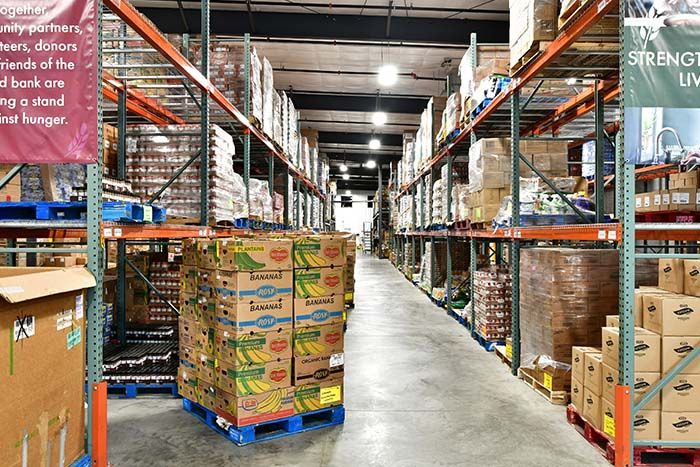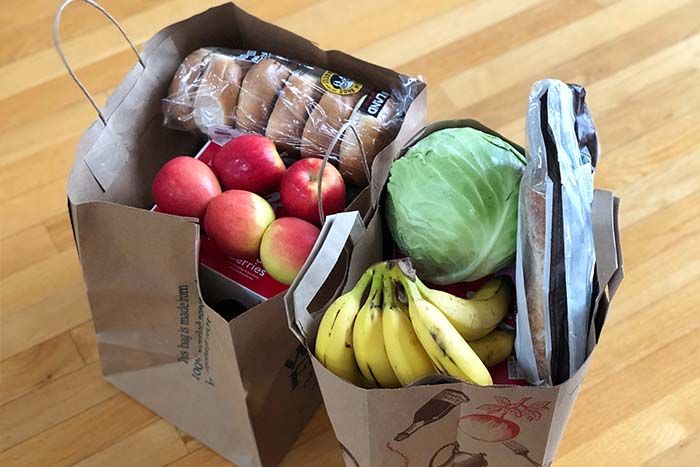
October 23, 2025
FMP Responds to FoodShare Delays
Feed My People Food Bank (FMP) is urging community awareness and preparedness following the Wisconsi...
Originally published in the Eau Claire Leader-Telegram on May 27, 2022
By Eric M. Jamelske

Jamelske joined the Economics Department at UW-Eau Claire in 2002. He teaches microeconomics, health economics and environmental economics and is involved in research work related to international views on climate change and healthy eating with a focus on fruits and vegetables, farmers markets and food purchasing/consumption behaviors of low-income households.
Inflation is defined as a loss in the purchasing power of money due to sustained rising prices. We know inflation is here because we see it in our daily lives as we fill up the gas tank, visit the grocery store, pay our energy bills and more.
Inflation is measured by the Consumer Price Index (CPI) which uses surveys of prices for a market basket consisting of typical goods and services across a variety of categories and is released monthly by the Bureau of Labor Statistics (BLS). According to the most recent data, the average price level for all goods and services in the U.S. is 8.5% higher in March 2022 compared to March 2021. Breaking this aggregate measure down from March 2021 to March 2022 to look at a few key sectors reveals that prices for food, housing and transportation increased, respectively, by 8.5%, 6.4% and 22.5%.
Exactly how inflation is measured and interpreting what causes it, what it means and how it is related to labor markets and wages, as well as how it is addressed through policy, is complicated and difficult to explain. The purpose of this editorial is to keep the story simple and highlight that low-income households are disproportionately affected by inflation and as a society we should be aware of this and be prepared to help ease this burden for those hurt the most.
Low-income households spend a higher share of their budgets on basic needs such as food, shelter and transportation (82%) compared to middle-income (78%) and high-income (67%) households (Brookings Institute Report). Moreover, low-income households also have less savings and less room for substitutions and adjustments regarding their consumption of essential goods and services compared to middle- and high-income households.
Food insecurity is defined as experiencing reduced quality and variety of foods, worrying to some degree about not having enough food to eat and even running out of food. Data from the Feeding America Project estimates that 42 million people (13 million children) experienced food insecurity in 2021 compared to 32.5 million people (10.7 million children) in 2019, suggesting that food insecurity has worsened in the COVID pandemic. This is despite expanded government resources temporarily allocated to help, including stimulus payments, increased Supplemental Nutrition Assistance Program (SNAP) benefits, increased child tax credits and more, which have either already ended or are about to end.
Collectively, this suggests that low-income households will continue to face hardships in the coming months, especially as it relates to meeting the most basic and essential of all needs - having access to enough food to eat. Moreover, with summer coming when children are not in school, food insecurity will be further worsened without access to free and reduced price meals available through schools.
Although the data and information used here is at the national level, the story is similar statewide in Wisconsin and also in Eau Claire and the surrounding communities of the Chippewa Valley. Locally, Feed My People Food Bank does an excellent job providing much needed services to food-insecure households. However, given the ongoing pandemic coupled with the highest inflation we have seen in four decades, Feed My People needs help through financial donations to meet the rising need for food during these unprecedented times.
I am a faculty advisor of a group of students that works at the Community Table, and I also volunteer at the Eau Claire farmers market downtown with the Market Match Program. Each of these opportunities allows me to see firsthand the hunger issue in our community. Feed My People needs support from the community to maximize its outreach efforts in getting much needed food on the tables in households struggling with food insecurity, especially during these unique and trying times. Whether you donate funds, volunteer or simply speak up, together we can help curb the impact that inflation is making on hardworking families.

